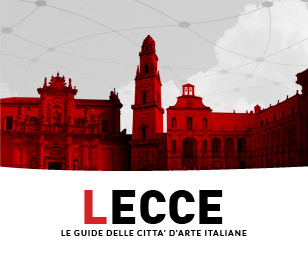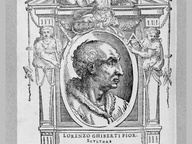Jacopo Robusti (Tintoretto)
Venice 29/04/1519 - Venice 31/05/1594

The son of a tintore, or dyer of silk (hence the name “Tintoretto”), who had been awarded the epithet Robusti for his robust defence of the gates of Padua during the war of the League of Cambrai, from an early age Jacopo used the colours he found in his father’s laboratory, so much so that he was soon sent to work at the studio of Titian (1530). There, so the story goes, the master saw a drawing by his young student and threw him out immediately as he was so afraid of the competition. It seems that Tintoretto was already known as a master by 1539, with an independent studio near Campo San Cassiàn in the sestiere of San Polo. In 1541, at only twenty-three years old, he was commissioned by the aristocrat Vittor Pisani to create sixteen panels depicting the Metamorphoses of Ovid to celebrate his patron's marriage. He also made a trip to Mantua to study the frescoes by Giulio Romano in Palazzo Te. In 1548, he painted The Miracle of St Mark and was rewarded with praise from Pietro Aretino. Up to 1566, he worked on three canvases, again on behalf of the Scuola Grande di San Marco, depicting the saint’s posthumous miracles: St Mark Saving a Saracen from Shipwreck, The Theft of the Body of St Mark and Rediscovery of the Body of St Mark. For the apartments of the Scuola della Trinità, a minor confraternity, he executed a cycle of paintings between 1551 and 1552 depicting stories from the Book of Genesis, including the Creation of the Animals, Original Sin and Cain and Abel. In 1564, Tintoretto won a commission from the Scuola Grande di San Rocco to create their St Roch in Glory, to be placed in the main hall of the apartments. The following year he became a member of the school and was tasked with executing a cycle of paintings on the Passion of Christ. In 1566, he painted five allegorical canvases to be placed in the Inquisitor’s Room of the Doge’s Palace. Despite being busy with the Doge’s Palace and the Scuola Grande di San Rocco, in 1579 Tintoretto accepted Guglielmo Gonzaga’s invitation to create eight large canvases for the Doge’s Palace in Mantua in which he glorifies the deeds of the Gonzaga family. In 1588, upon the death of Veronese, he took over the deceased’s commission for the decoration of the walls of the Hall of the Great Council. The resulting work is an immense canvas more than seven metres high and 24 metres wide, depicting Paradise, with Christ Pantocrator at the centre. Tintoretto died at the age of 75, after having realised three final works for the Basilica of San Giorgio Maggiore: The Jews in the Desert and the Fall of Manna, The Last Supper and Christ Carried to the Tomb (1592-1594).
Works of art
-
Collezioni Comunali d'Arte Palazzo D'Accursio o Comunale
-
Visitazione e i Santi Giuseppe e Zaccaria
Pinacoteca Nazionale di Bologna







